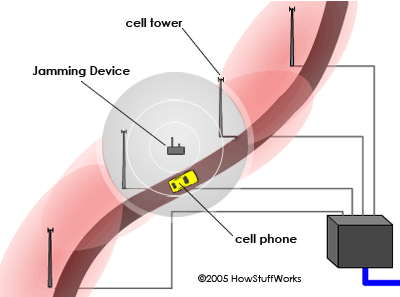Industry News
How Cell Phone Signal Jammers Work ?
How Cell Phone Signal Jammers Work ?
Cell phones are everywhere these days. According to the Cellular Telecommunications and Internet Association, almost 195 million people in the United States had cell-phone service in October 2005. And cell phones are even more ubiquitous in Europe.
It's great to be able to call anyone at anytime. Unfortunately, restaurants, movie theaters, concerts, shopping malls and churches all suffer from the spread of cell phones because not all cell-phone users know when to stop talking. Who hasn't seethed through one side of a conversation about an incredibly personal situation as the talker shares intimate details with his friend as well as everyone else in the area?
While most of us just grumble and move on, some people are actually going to extremes to retaliate. Cell phones are basically handheld two-way radios. And like any radio, the signal can be disrupted, or jammed.
In this article, you'll see how cell-phone jammers work and learn about the legality of their use.
Cell Phone Jamming Basics
Disrupting a cell phone is the same as jamming any other type of radio communication. A cell phone works by communicating with its service network through a cell tower or base station. Cell towers divide a city into small areas, or cells. As a cell-phone user drives down the street, the signal is handed from tower to tower.

A jamming device transmits on the same radio frequencies as the cell phone, disrupting the communication between the phone and the cell-phone base station in the tower.
It's a called a denial-of-service attack. The jammer denies service of the radio spectrum to the cell-phone users within range of the jamming device.
Cell Phone Jamming Device
Jamming devices overpower the cell phone by transmitting a signal on the same frequency and at a high enough power that the two signals collide and cancel each other out. Cell phones are designed to add power if they experience low-level interference, so the jammer must recognize and match the power increase from the phone.
Cell phones are full-duplex devices, which means they use two separate frequencies, one for talking and one for listening simultaneously. Some jammers block only one of the frequencies used by cell phones, which has the effect of blocking both. The phone is tricked into thinking there is no service because it can receive only one of the frequencies.
Less complex devices block only one group of frequencies, while sophisticated jammers can block several types of networks at once to head off dual-mode or tri-mode phones that automatically switch among different network types to find an open signal. Some of the high-end devices block all frequencies at once, and others can be tuned to specific frequencies.
To jam a cell phone, all you need is a device that broadcasts on the correct frequencies. Although different cellular systems process signals differently, all cell-phone networks use radio signals that can be interrupted. GSM, used in digital cellular and PCS-based systems, operates in the 900-MHz and 1800-MHz bands in Europe and Asia and in the 1900-MHz (sometimes referred to as 1.9-GHz) band in the United States. Jammers can broadcast on any frequency and are effective against AMPS, CDMA, TDMA, GSM, PCS, DCS, iDEN and Nextel systems. Old-fashioned analog cell phones and today's digital devices are equally susceptible to jamming.
The actual range of the jammer depends on its power and the local environment, which may include hills or walls of a building that block the jamming signal. Low-powered jammers block calls in a range of about 30 feet (9 m). Higher-powered units create a cell-free zone as large as a football field. Units used by law enforcement can shut down service up to 1 mile (1.6 km) from the device.

